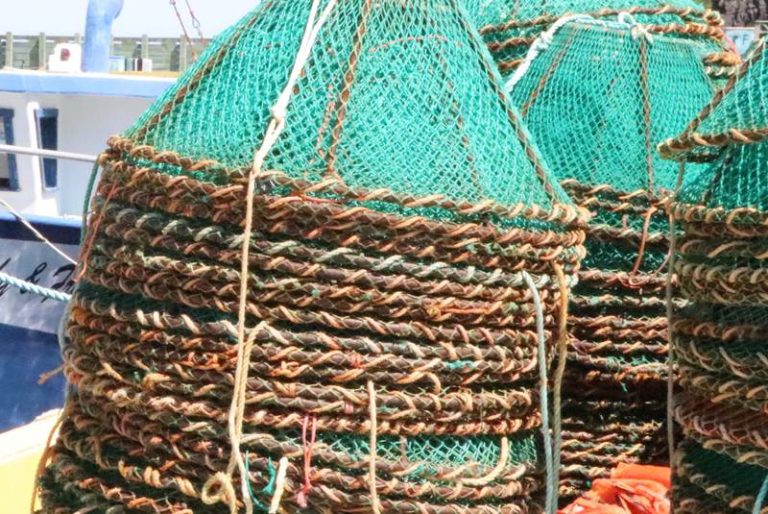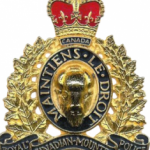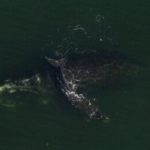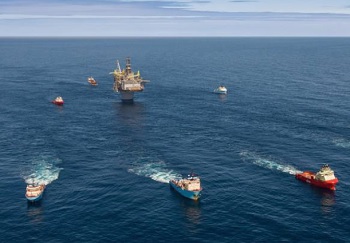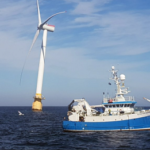Tag Archives: chum salmon
Unalaska pushes back against proposed bycatch restrictions on pollock fishery
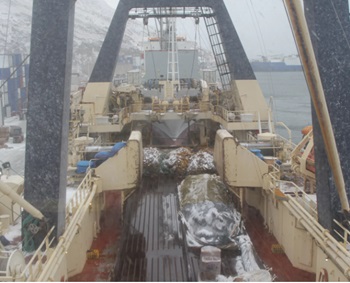 Unalaska leaders are pushing back against a proposed petition to eliminate Chinook bycatch in the Bering Sea Alaska pollock fishery. Nearly 100 tribes and communities in western Alaska, including the Association of Village Council Presidents, signed an emergency petition that would set a zero-bycatch limit on Chinook salmon in the pollock trawl fishery for 180 days. Unalaska Mayor Vince Tutiakoff Sr. said in a letter that a zero-cap would “effectively shut down the entire pollock fishery of the Bering Sea,” and create a “dire situation” for Unalaska. links, more, ??click to read<< 11:19
Unalaska leaders are pushing back against a proposed petition to eliminate Chinook bycatch in the Bering Sea Alaska pollock fishery. Nearly 100 tribes and communities in western Alaska, including the Association of Village Council Presidents, signed an emergency petition that would set a zero-bycatch limit on Chinook salmon in the pollock trawl fishery for 180 days. Unalaska Mayor Vince Tutiakoff Sr. said in a letter that a zero-cap would “effectively shut down the entire pollock fishery of the Bering Sea,” and create a “dire situation” for Unalaska. links, more, ??click to read<< 11:19
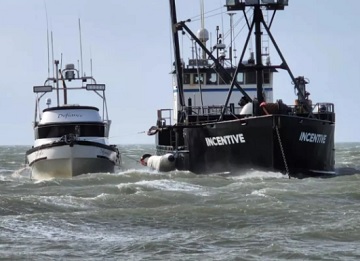
Amid record-low chum runs, Board of Fish pares down limits on Area M’s June fishery
The Yukon River’s chum salmon runs have returned at record lows over the last three years. At a recent meeting, the Alaska Board of Fisheries debated a contentious proposal that would have reduced fishing time for a controversial and lucrative fishery along the Alaska Peninsula, called Area M. Area M is a mixed-stock “intercept” fishery that targets salmon further from their spawning grounds than terminal fisheries like Bristol Bay. Proposal 140 was meant to limit the amount of chum caught in Area M’s South Peninsula fishery in June to allow more chum to return to Western Alaska rivers. The board ended up passing some restrictions on the fishery, but it’s far short of what residents in those areas were hoping for. And communities that depend on the Area M fishery say they aren’t satisfied either. >click to read< 13:20
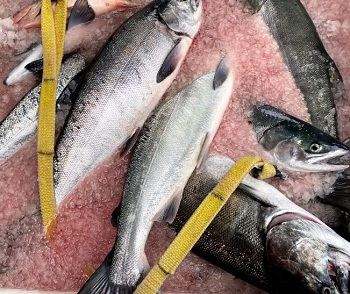
A rare summer-long chinook opener was not enough to lure SE trollers away from Chumageddon
Chinook trollers in Southeast may have left a sizeable portion of their allocation in the water when the summer season wrapped up on September 20 – but that doesn’t mean it was a bad year. Instead, it was a rather unusual year. “Being able to retain chinook for the entire summer is not something that they’re used to,” said Grant Hagerman, troll management biologist for the Alaska Department of Fish & Game in Sitka. Commercial trolling for king salmon was open all summer, with only three days off to allow silver salmon – or coho – time to escape into their natal streams, lakes, and rivers. Hagerman says the long summer season wasn’t due to a lack of king salmon; rather, it was an abundance of choice. Commercial trolling has changed. >click to read/listen< 12:37
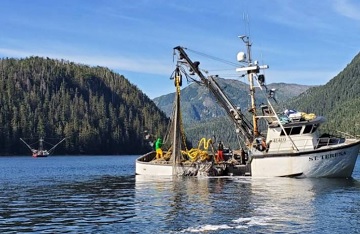
Troll catch for chum salmon in Sitka Sound hits new record
The troll fishery for chum salmon in Sitka Sound has gone from looking pretty dismal to record-setting, almost overnight. A surge of hatchery-produced, fall chum has been pushing catch rates for trollers into numbers normally seen by the net fisheries. The troll catch for chum hit a new record last Friday, with almost half a million fish, about 50,000 more than the old record set in 2013. And the fishing isn’t over yet. Even more extraordinary is the turnaround in chum this year, from zero to hero. June and July were bad, and then August came. >click to read< 08:28
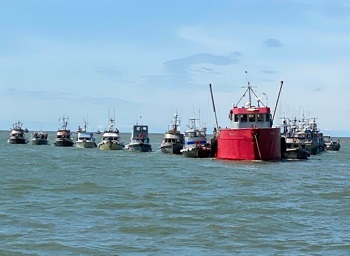
2020 commercial salmon catch, and value took a dive
Commercial salmon harvests proved challenging for the 2020 season, challenged by a global pandemic of the novel coronavirus, with the overall fish catch and its value down considerably from a year earlier. Data released on Monday, Nov. 9 by the Alaska Department of Fish and Game, said the all species harvest has an approximate value of $295.2 million, down 56 percent from $673.4 million in 2019. Fishermen delivered some 116.8 million fish, a 44 percent drop from the 208.3 harvested a year earlier, the report said. >click to read< 18:15
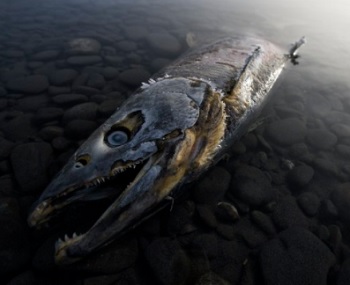
Scientists perplexed by this year’s low chum salmon numbers in Yukon River
The latest estimates aren’t just bad, they’re “absolutely dismal,” says Stephanie Quinn-Davidson, director of the Yukon River Inter-Tribal Fish Commission in Alaska. Every year scientists count fish as they swim upstream by Eagle, Alaska, on the way back from the ocean. Scientists manually review the data from the Eagle sonar. While it can be tricky, they can separate chum from other fish by size, speed, and direction of travel. This year the station’s fall chum estimate is 23,828 fish. >click to read< 08:47
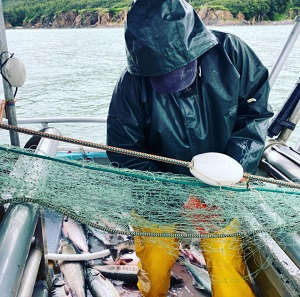
More uncertainty for Alaskan fishermen, ‘Devastating,’ meager chum salmon returns worry the fishing industry
“I have 35 years of experience and I’ve never seen a year this poor since 1988,” said Lars Strangeland, a gillnetter based in Juneau. “The market is extremely poor. We were looking at terrible prices wherever it goes.” The shutdown of restaurants and changes in international markets, all complicated by the coronavirus pandemic, is leading to less demand for chum salmon and roe. Strangeland is on the Board of Directors of United Southeast Alaska Gillnetters, and he said chum returns this year have been, “devastating.” “It’s unprecedented and staggeringly poor as well,” he said. >click to read< 13:07
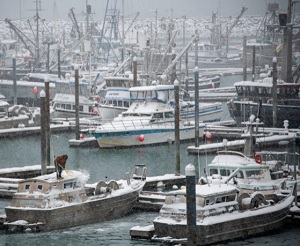
Humpy run into Price William Sound forecast is above average
Forecasts for the 2020 fishing season show a robust run of pink and chum salmon into Price William Sound, along with a healthy run of kings and below average return of wild and hatchery salmon to the Copper River. The area forecast released by the Alaska Department of Fish and Game on Tuesday, Jan. 28, also put wild sockeye returns to Coghill Lake at slightly below average. >click to read< 09:20
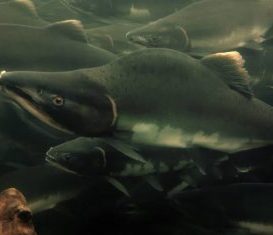
Seafood society suspends its own MSC certification over lack of stock assessment
Canadian Pacific Sustainable Seafood Society has announced the “self-suspension” of the MSC certification for B.C. wild salmon, over concerns that the proper stock assessments required to maintain MSC verification are not being done. The society fears it will lose its MSC certification anyway, since it feels DFO is failing to do the science and monitoring required to maintain the certification, so it is voluntarily suspending it for B.C. sockeye, pink and chum salmon. It may be a moot point this year, since there are no wild salmon being caught this year for consumers to buy. >click to read< 20:12
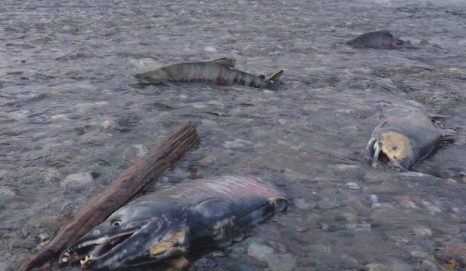
Salmon complete 1,000-mile journey, and life
On a morning with biting air in the single digits Fahrenheit, this river smells like sulfur and is splashy and loud. Bald eagles and ravens swoop in the updraft of a nearby rock bluff in what looks like play. In early November, a time when shadows lengthen and deep cold hardens the landscape, chum salmon have returned to spawn in the lower Delta River. In spots, the water is so shallow that dorsal fins wiggle in the frigid air. Some fish get frostbite on really cold days. Now is the peak of one of Alaska’s last great animal migrations of the year. click here to read the story 10:11
Alaska salmon season a success in global market
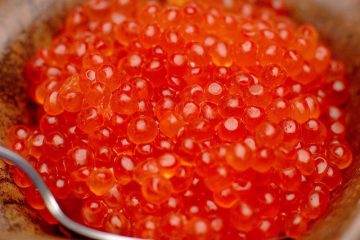 It was a generally good salmon season for Alaska, except for one species. “It was a disastrous year for chinook harvest.” That’s Andy Wink, a seafood economist with the consulting firm McDowell Group. Wink says while king salmon may be the most famous salmon species among Alaskans, it also makes up the lowest total value of all the different commercial salmon species. “Sockeye, pink salmon, chum salmon, those are the species that for the commercial fleet really move the needle in terms of total value.” click here to read the story 19:25
It was a generally good salmon season for Alaska, except for one species. “It was a disastrous year for chinook harvest.” That’s Andy Wink, a seafood economist with the consulting firm McDowell Group. Wink says while king salmon may be the most famous salmon species among Alaskans, it also makes up the lowest total value of all the different commercial salmon species. “Sockeye, pink salmon, chum salmon, those are the species that for the commercial fleet really move the needle in terms of total value.” click here to read the story 19:25
Southeast gillnetters set a one-week record
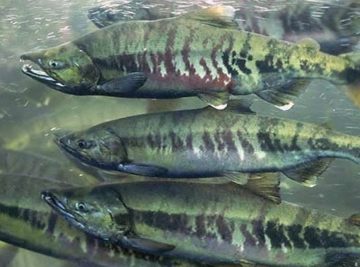 Commercial fishermen caught a historic amount of fish this week in a district south of Juneau. Statistics are still preliminary, but catch numbers for gillnetters in the Taku River-Port Snettisham district will likely set a record for the first full week of July, according to reports from the Alaska Department of Fish & Game. ADF&G is reporting that fishermen in the district caught 170,000 chum salmon from July 2 to July 8, well above the previous record for the week of 134,000 set in 2013. So far, gillnetters have caught nearly five times as many chum salmon this year compared to last year. click here to read the story 12:25
Commercial fishermen caught a historic amount of fish this week in a district south of Juneau. Statistics are still preliminary, but catch numbers for gillnetters in the Taku River-Port Snettisham district will likely set a record for the first full week of July, according to reports from the Alaska Department of Fish & Game. ADF&G is reporting that fishermen in the district caught 170,000 chum salmon from July 2 to July 8, well above the previous record for the week of 134,000 set in 2013. So far, gillnetters have caught nearly five times as many chum salmon this year compared to last year. click here to read the story 12:25
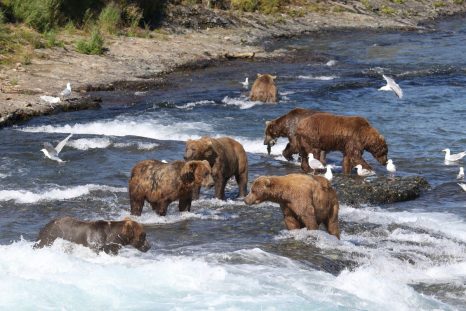
Bears vs. salmon: Solving the McNeil River puzzle
Although brown bears kill more than half the chum salmon entering the world-famous McNeil River each year, state fishery biologists and managers don’t believe the bears’ predation is the primary reason for the river’s stubbornly persistent weak salmon runs. Consequently, although the state Board of Fisheries recently designated the McNeil chum fishery a stock of concern, the board also decided against shooing away or killing some of the bears or helping the salmon avoid them — opting instead to allow the chum runs, over time, to recover on their own. McNeil River — named about a century ago for area rancher Charlie McNeil and bounded by McNeil River State Game Refuge and Katmai National Park — drains into the western portion of Kamishak Bay, approximately 100 miles west-southwest of Homer. The entire drainage lies within the McNeil River State Game Sanctuary, established in 1967, an exceptional bear-viewing area located near a cascading set of falls that has been drawing wildlife lovers since its creation. Read the story here 09:25
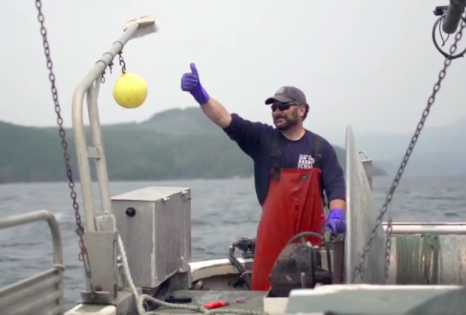
‘Largest’ recorded chum salmon run: 2 million fish overload nets, burden boats
Record numbers of chum salmon — two million fish — returned to B.C’s West Coast this year, bringing good news for fishermen fatigued by word of record lows of Fraser River sockeye. That news got even better with the Johnstone Strait haul hitting 1.3 million fish. “Fraser River chum salmon return is estimated to be two million, the largest return on record,” said Lara Sloan of Fisheries and Oceans Canada in an email to CBC Friday. “Catches in Johnstone Strait were some of the strongest on record. There have also been very strong returns of chum to the Nanaimo River.” Gillnetter Shaun Strobel fishes the west coast of Vancouver Island, down the Johnstone Strait to Nanaimo. “Everybody was catching fish from the top of the straights up towards Alert Bay all the way down to Campbell River. We were catching fish everywhere,” said Strobel, who described loads of fish weighing down boats and threatening to break or sink nets. Read the story here 09:29
Chum Salmon Flood Western Alaska Waters as Buyers Struggle to Keep Up
 Western Alaska is in midst of one of the best salmon runs in decades, and that means both subsistence and commercial fishermen in waters around Norton Sound and Kotzebue are catching record numbers of chum. “We’d forecasted a commercial harvest of 70-100,000 [of chum] and we’re going to blow right through that” said Jim Menard, the Arctic Area Manager for the Alaska Department of Fish and Game. The latest numbers point to Norton Sound passing 120,000 chums, the best harvest since 1986. Read the rest here 16:08
Western Alaska is in midst of one of the best salmon runs in decades, and that means both subsistence and commercial fishermen in waters around Norton Sound and Kotzebue are catching record numbers of chum. “We’d forecasted a commercial harvest of 70-100,000 [of chum] and we’re going to blow right through that” said Jim Menard, the Arctic Area Manager for the Alaska Department of Fish and Game. The latest numbers point to Norton Sound passing 120,000 chums, the best harvest since 1986. Read the rest here 16:08
Little pockets of pus – Subsistence fishermen find possible infection in Yukon chum salmon
 As yukon salmon continue their summer runs, subsistence fishermen continue to express frustration about gear restrictions, closures, and — now — potentially infected fish. When managers and fishermen met for their weekly teleconference on Tuesday, they heard reports of discoloration and pus in chum salmon. “Little pockets of pus when you fillet the fish that’ll be about the size of a pea or maybe a little smaller,” he said. “And I know that in warm water, which is what we have right now, ichthyophonus really grows rapidly if the fish is infected.” Read the rest here 19:20
As yukon salmon continue their summer runs, subsistence fishermen continue to express frustration about gear restrictions, closures, and — now — potentially infected fish. When managers and fishermen met for their weekly teleconference on Tuesday, they heard reports of discoloration and pus in chum salmon. “Little pockets of pus when you fillet the fish that’ll be about the size of a pea or maybe a little smaller,” he said. “And I know that in warm water, which is what we have right now, ichthyophonus really grows rapidly if the fish is infected.” Read the rest here 19:20
The Daily Astorian – Editorial: Bring back the lowly chum
 Creating a niche fishery makes sense and is good for the ecosystem Who would eat dog? Perhaps many more of us should, though not in the form of Rover but rather dog, chum or keta salmon, as the species has variously been known over the years. On the U.S. West Coast as a whole, commercial landings of chum were 149.9 million pounds in 2012, a 46 percent gain over 2011. But these catches certainly weren’t made in the Columbia River, where only two residual populations remain after decades of deliberate extermination efforts and habitat losses. more@thedailyastorian 18:10
Creating a niche fishery makes sense and is good for the ecosystem Who would eat dog? Perhaps many more of us should, though not in the form of Rover but rather dog, chum or keta salmon, as the species has variously been known over the years. On the U.S. West Coast as a whole, commercial landings of chum were 149.9 million pounds in 2012, a 46 percent gain over 2011. But these catches certainly weren’t made in the Columbia River, where only two residual populations remain after decades of deliberate extermination efforts and habitat losses. more@thedailyastorian 18:10
Skeena River Once Supported More Than 50 times More Chum Salmon: New Study
 TERRACE, BRITISH COLUMBIA — A new study published this week provides strong evidence that Skeena River chum salmon were in the past up to 52 times more abundant than at present. continued@stockhouse
TERRACE, BRITISH COLUMBIA — A new study published this week provides strong evidence that Skeena River chum salmon were in the past up to 52 times more abundant than at present. continued@stockhouse
The US Coal Industry Wants to Boost Exports to Asia – Native American Tribes Stand in the Way – Lhaq’temish – People of the Sea
The gray waters of the Puget Sound are rough and scattered with white caps on this cold and wet October morning. The air is pungent with the low-tide smells of seaweed and salt. Schools of chum salmon are migrating from the Pacific into the Nooksack River to spawn. A handful of Lummi fishermen in small weather-beaten boats brave the driving rain and frigid gusts to reel in their nets, harvesting the fish as their ancestors have done for 175 generations… The Lummi have traditionally kept a low profile and declined to get openly involved in the political controversies of their white neighbors. But now tribe members are taking center stage in a fight that they believe is about the very existence of the fish that is so central to their traditional way of life. Coal, LNG, Energy exports. Read more

































